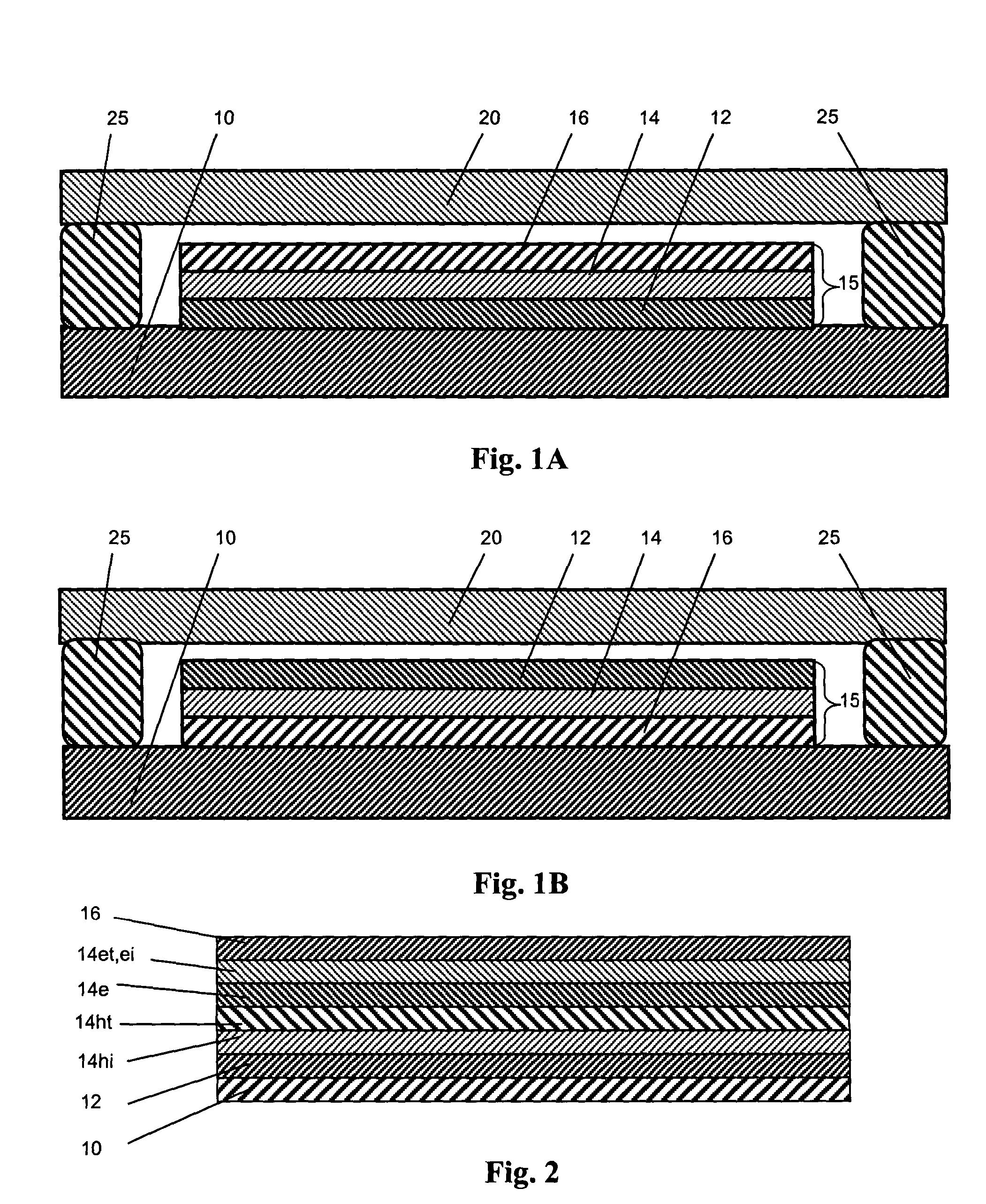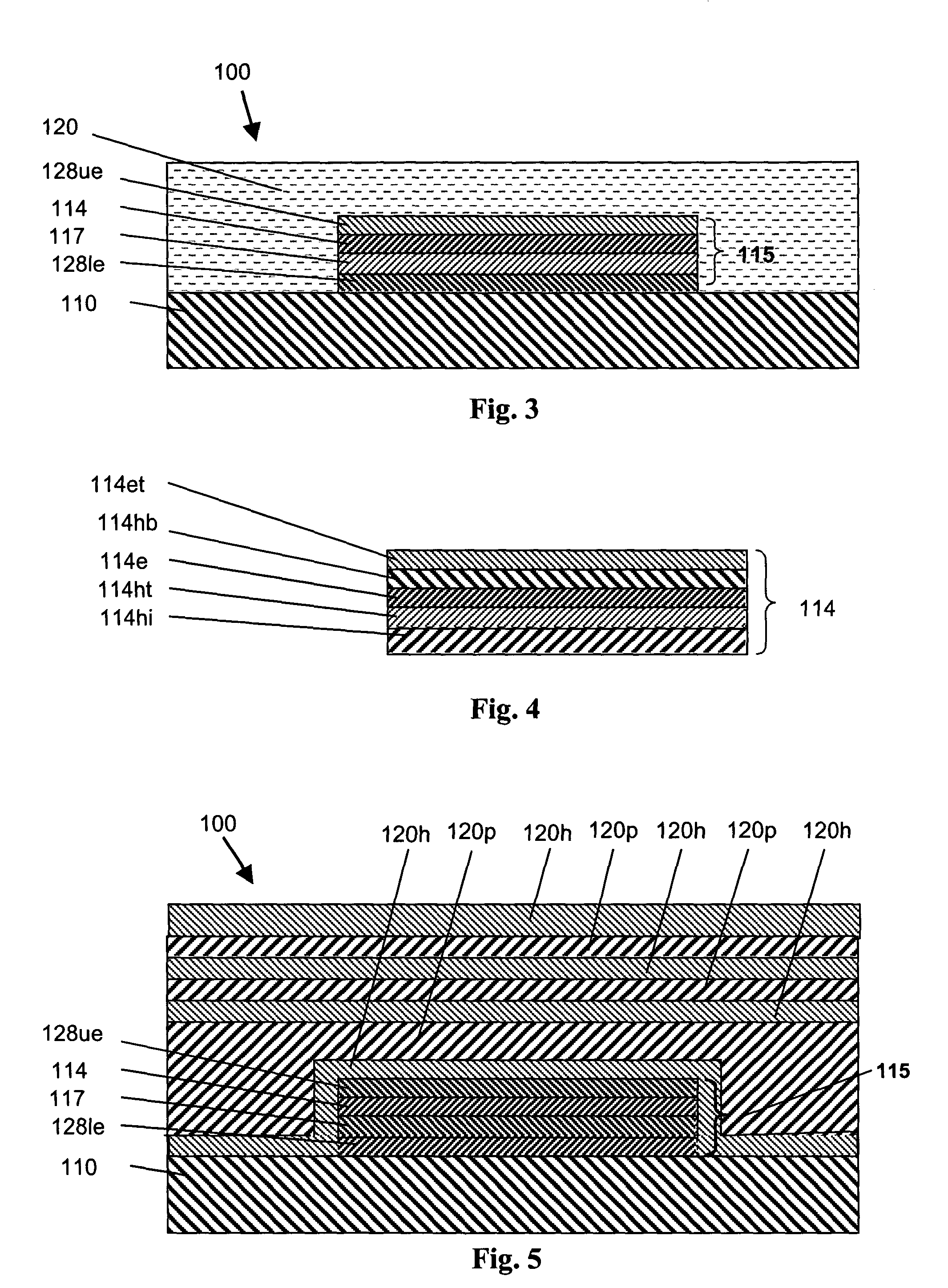Protected organic electronic devices and methods for making the same
a technology of organic electronic devices and protection, which is applied in the direction of organic semiconductor devices, discharge tubes/lamp details, discharge tubes luminescnet screens, etc., can solve the problems of limiting the lifetime of the device, reducing the yield of the product, so as to reduce or eliminate the damage to the display. , the effect of avoiding the display damag
- Summary
- Abstract
- Description
- Claims
- Application Information
AI Technical Summary
Benefits of technology
Problems solved by technology
Method used
Image
Examples
example 1
[0051] The following describes a process in accordance with the present invention for the formation of a thin film encapsulated OLED display, specifically a flexible OLED which process will now be described with reference to FIG. 7.
[0052] The substrate 110 in this example is a flexible substrate consisting of substrate layer 110s and a multilayer barrier stack 110 ml (layers not separately illustrated). The substrate layer 110s in this example is barrier coated polyethylene terephthalate (PET) of thickness 7 mil (178 μm). The multilayer barrier stack 110 ml consists of alternating layers of an organic polymer (i.e., polyacrylate) as a planarizing material and an inorganic dielectric (i.e., aluminum oxide, Al2O3) as a high-density material. There are approximately 5 alternating pairs of these materials on the substrate. The first polymer layer planarizes the surface to make it smooth, while subsequent polymer layers serve to decouple any defects in the inorganic dielectric. The inor...
example 2
[0058] Encapsulated displays were made in accordance with the process described in Example 1, either with or without a PEDOT-PSS layer. All devices were examined and tested approximately one week after manufacture. In the devices without the PEDOT-PSS polymeric layer, pixels were observed to fail within the first few minutes of display illumination, resulting in blisters / delamination. In analogous devices containing the PEDOT-PSS polymeric layer, on the other hand, blisters / delamination were not observed, and such pixel failure was minimal or non-existent. Indeed, pixels in devices containing the polymeric layer of the invention were observed to continue functioning after 100 hours or more of illumination.
[0059] The results show that by providing an intervening conductive polymer layer as disclosed herein (e.g., a PEDOT-PSS layer), between the anode and the overlying organic small-molecule layer in a device having a thin film encapsulation region, display damage associated with the...
PUM
 Login to View More
Login to View More Abstract
Description
Claims
Application Information
 Login to View More
Login to View More - R&D
- Intellectual Property
- Life Sciences
- Materials
- Tech Scout
- Unparalleled Data Quality
- Higher Quality Content
- 60% Fewer Hallucinations
Browse by: Latest US Patents, China's latest patents, Technical Efficacy Thesaurus, Application Domain, Technology Topic, Popular Technical Reports.
© 2025 PatSnap. All rights reserved.Legal|Privacy policy|Modern Slavery Act Transparency Statement|Sitemap|About US| Contact US: help@patsnap.com



